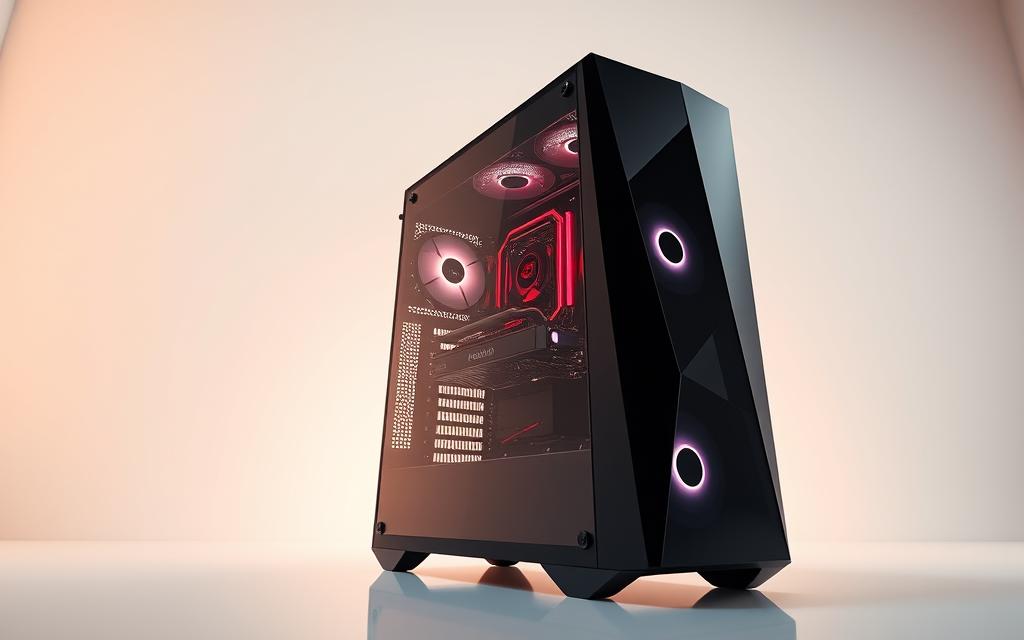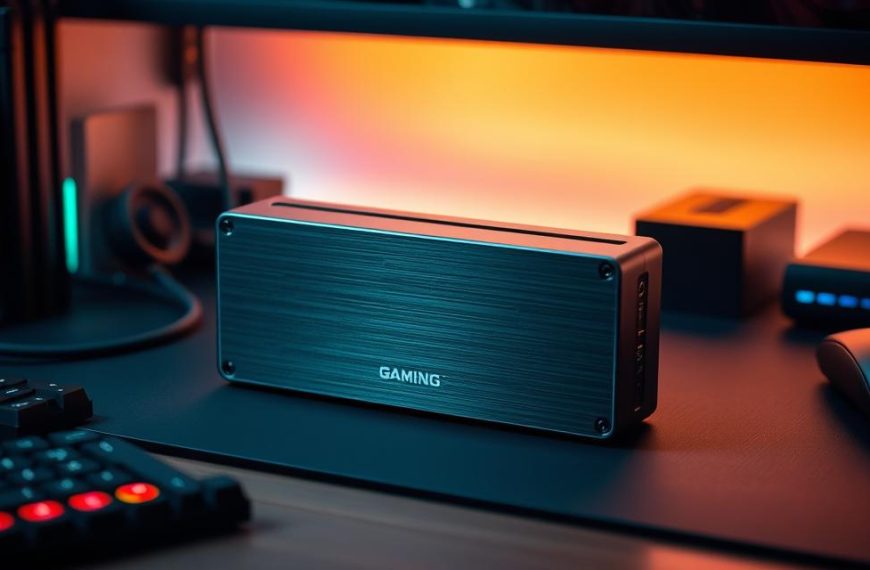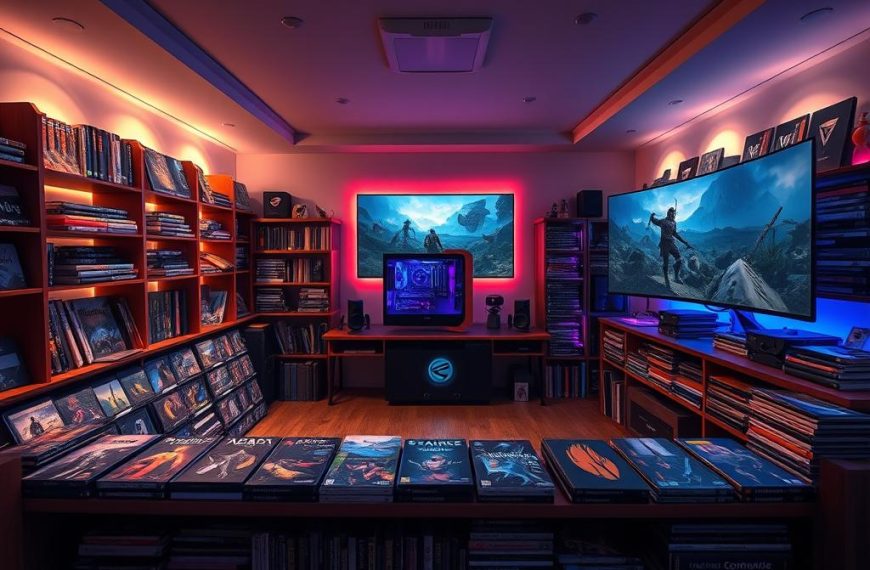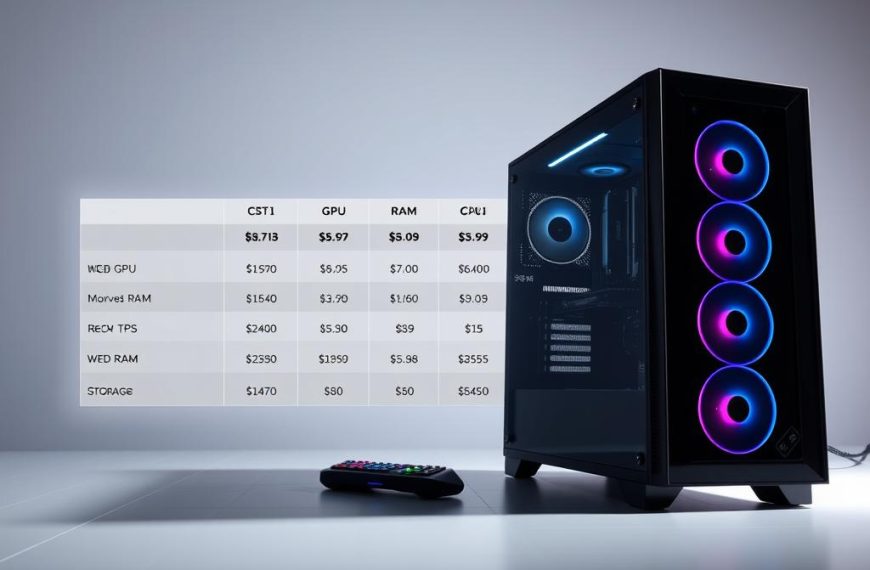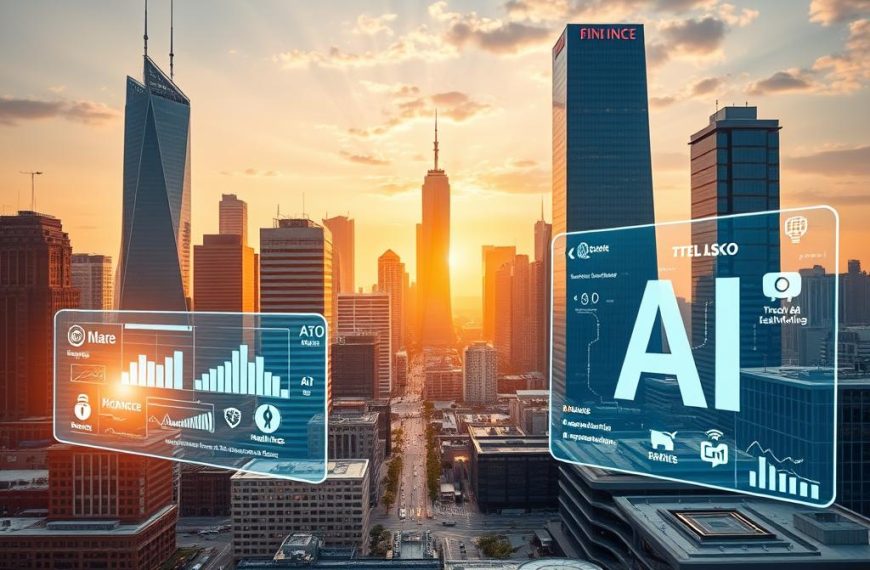Modern gaming demands more power than ever. Titles now recommend 16GB or more for smooth gameplay, leaving older systems struggling. Even basic tasks like running Windows 10 become difficult with limited memory.
According to Kingston FURY’s 2023 data, multitasking gamers often need 32GB. This shift highlights how far technology has advanced since the days of 1GB setups.
While retro gaming might still work, newer AAA titles won’t run well. Other components like SSDs and GPUs also impact performance, but insufficient memory creates a major bottleneck.
This guide explores realistic expectations for low-memory systems. We’ll also share optimization tips and budget-friendly upgrade options for better performance.
How RAM Affects Gaming Performance
Every frame in a game depends on efficient memory handling. Random access memory (RAM) acts as a temporary buffer, storing active data like textures and physics calculations. Without enough capacity, your system resorts to slower storage drives, causing stutters.
The Role of Random Access Memory in Games
Modern titles stream assets dynamically. Open-world games, like those tested by Kingston FURY, load textures on-the-fly. With only 1GB, constant swapping to SSDs creates thrashing—visible as lag during gameplay.
Latency also matters. Lower CAS values (e.g., CL14) reduce delays compared to CL22 modules. This subtle difference impacts responsiveness, especially in fast-paced shooters.
Why Faster RAM Matters for Frame Rates
DDR5’s 8400MT/s bandwidth outperforms DDR4’s 3200MHz, easing data bottlenecks. PCWorld’s tests show even 2GB struggles with Chrome tabs open—a common scenario for multitasking gamers.
Background apps like Discord compound the strain. Upgrading to faster memory ensures consistent frame times, not just higher FPS averages.
Is 1GB RAM Good for Gaming PC? The Hard Truth
Gaming has evolved dramatically, leaving older hardware far behind. While 1GB might have handled early 2000s titles like Doom, today’s Cyberpunk 2077 demands 16GB just to launch. The gap between past and present requirements is staggering.
Minimum vs. Recommended Requirements for Modern Games
Windows 10’s minimum system requirement alone is 2GB, leaving no room for games. Popular 2023 releases like Hogwarts Legacy need 16GB, while Call of Duty: Warzone 2 requires 8GB. Even lightweight apps like Chrome can push usage beyond 4GB when multitasking.
Creative tasks suffer too. Adobe Premiere crashes with less than 4GB, and Blender fails to render simple models. Kingston FURY’s tests show that background processes—antivirus scans, Discord—consume resources quickly.
Real-World Limitations of 1GB RAM
Attempting GTA V on 1GB yields unplayable slideshows (ram need of modern software.
Future-proofing is impossible with such constraints. Upgrading remains the only viable path for smooth gameplay and multitasking.
What Types of Games Can You Run on 1GB RAM?
Not all games require cutting-edge hardware—some classics still thrive on modest setups. While newer titles demand hefty resources, retro and indie options remain playable. Let’s explore what works and what doesn’t.
Lightweight and Retro Titles That Might Work
Games from the late 90s and early 2000s, like Doom or Age of Empires II, were designed for machines with 128MB–256MB. These titles run smoothly even today.
2D indie games such as Terraria or Undertale also fit well. Tweaking settings to low can help if you want play these on older hardware.
Emulation works for 16-bit consoles (SNES, Genesis). However, PS1 or N64 emulators struggle due to higher overhead.
Why AAA Games Are Off the Table
Modern engines like Unreal 5 or Unity require at least 4GB. Texture streaming fails with insufficient memory, causing stutters.
Fortnite, for example, needs 4GB minimum. DRM software like Denuvo adds another 500MB+, making 1GB setups impractical.
Even modding older games like Skyrim becomes impossible—popular modpacks demand 8GB+.
Optimizing Your PC for Gaming with Low RAM
Squeezing performance from limited memory requires smart optimizations. While upgrades are ideal, these tweaks help stretch your system further.
Closing Background Applications and Processes
Windows 10’s background processes consume up to 1.5GB alone. Freeing memory starts with ruthless prioritization:
- Press Ctrl+Shift+Esc to open Task Manager. End non-essential applications like browser tabs or updaters.
- Disable SysMain (formerly Superfetch) via Services.msc to reduce disk thrashing.
- Use Game Mode (Windows Settings > Gaming) to allocate resources to active games.
“Memory-hungry apps like Chrome or Discord can halve your available resources. Kill them before launching games.”
Adjusting In-Game Settings for Better Performance
Lowering graphical demands compensates for limited memory. Focus on these changes:
- Texture quality: Set to “Low” or “Medium” to reduce VRAM and RAM usage.
- Disable motion blur and ambient occlusion—they strain the system.
- Cap FPS at 30 or 60 to prevent erratic memory spikes.
Using Lightweight Operating Systems
Switching operating systems can reclaim hundreds of megabytes. Consider:
- Lubuntu: Idles at just 128MB, leaving room for lightweight games.
- Windows 10 LTSC: A stripped-down version with fewer background tasks.
- Portable gaming OSes like Batocera for retro-focused setups.
For dual-boot setups, reserve Linux for gaming and Windows for everyday tasks.
When to Upgrade: Signs You Need More RAM
Performance bottlenecks often reveal themselves through clear warning signs. When your system can’t handle modern applications, these symptoms reveal a pressing ram need. Addressing them quickly prevents frustration and hardware strain.
Frequent Lag and Stuttering During Gameplay
Persistent frame drops often point to memory limitations. When textures pop in late or physics calculations stall, your system is swapping data to slower storage.
Monitor these key indicators:
- Page fault rates exceeding 100/sec in Task Manager
- HDD activity lights flashing constantly during gameplay
- BSOD errors like PAGE_FAULT_IN_NONPAGED_AREA
“Modern games stream assets dynamically—insufficient memory forces constant reloading from storage, creating visible stutter.”
Inability to Multitask While Gaming
When basic tasks like Discord calls distort or browsers crash, memory capacity is exhausted. Kingston’s memory assessor shows streamers need 32GB for smooth operation.
| Scenario | Memory Usage | Performance Impact |
|---|---|---|
| 10 Chrome tabs | 2GB | 40% FPS drop |
| Discord + Spotify | 1.2GB | Input lag spikes |
| Game + Stream | 24GB+ | Requires 32GB kit |
If you want play while running background applications, upgrading becomes essential. The right amount prevents compromises in performance.
Alternatives to Upgrading RAM for Better Performance
Boosting performance doesn’t always require expensive upgrades. Strategic hardware adjustments and smarter configurations can breathe new life into older systems. Here’s how to maximize what you already own.
SSDs vs. HDDs: Boosting Load Times
Replacing an HDD with an SSD delivers the most noticeable speed improvement. NVMe drives, like Kingston’s FURY Renegade, offer 3500MB/s reads—7x faster than SATA SSDs.
Key advantages:
- Pagefile migration: Move virtual memory to an NVMe drive to reduce stuttering.
- Game installations: Load textures 3x faster compared to HDDs.
- Durability: No moving parts mean quieter, cooler operation.
Overclocking and Other Hardware Tweaks
Unlocking hidden potential starts in the BIOS:
- XMP profiles: Enable Kingston’s pre-tested overclocking settings for stable boosts.
- CAS latency: Lower timings (e.g., CL14 to CL16) improve responsiveness.
- PCIe allocation: Prioritize GPU lanes if your motherboard supports bifurcation.
“A well-tuned system with optimized storage often outperforms a mismatched high-RAM setup.”
For thermal management, renewing DIMM thermal paste can prevent throttling during extended sessions. These tweaks bridge the gap until a full upgrade becomes feasible.
Conclusion
Balancing hardware capabilities with modern software demands remains critical for smooth gameplay. While 1GB setups struggle with contemporary titles, cost-effective upgrades like 8GB DDR4 deliver a noticeable improvement without breaking the bank.
Retro enthusiasts can still enjoy classics, but newer AAA games require robust memory. Tools like Kingston FURY’s compatibility checker simplify upgrades, ensuring your computer meets 2024 standards.
For optimal performance, pair ram upgrades with SSDs and GPU tweaks. Start with a free diagnostic tool to identify bottlenecks, then explore budget-friendly kits for seamless playability.

